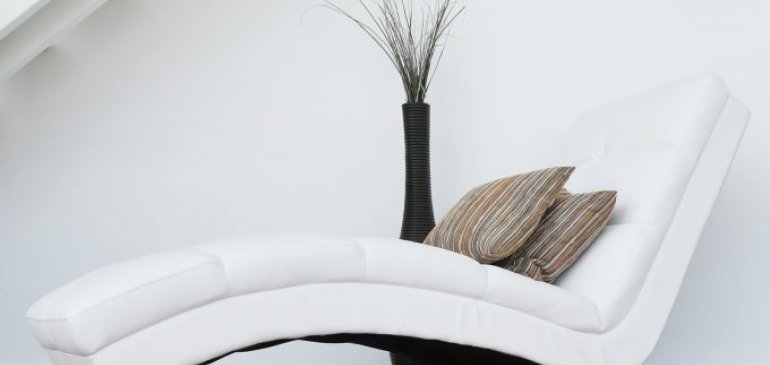A handsome leather couch is certainly luxurious, but it's also Expensive. In other words, this thing better last a lifetime. Sure, wear and tear is inevitable - we'd never tell you to stop with the Netflix binges - but ideally leather will only get better with age. You know, like a fine wine. "The best way to think about skin is that it's like your skin. Good quality aniline leather is a natural, breathable material; it changes over time," says RH furniture designer and craftsman Timothy Oulton. And just like leather, leather requires regular care to keep it looking its best. Not sure where to start? We asked Oulton and Christophe Pourny, New York-based restoration expert and author of The Furniture Bible toshare their tips for cleaning leather furniture and the secrets to bringing those better pieces back to life.
How to clean leather furniture
Materials:
- Saddle soap
- Water
- Leather cream
- Soft cloth
- Rubbing alcohol
- Cotton swab
According to Pourny, the only regular maintenance your leather couches and chairs need is a good dusting with a dry cloth once in a while and a monthly application of leather cream to keep the material soft and moisturized. In fact, the same product can help clean any dirt and stains that also develop. Here's what to do, step by step:
1. start with soap and water
To deal with mild stains, dip a clean, damp washcloth in warm soapy water and use it to wipe away the stain. "There are specific leather soaps, usually called saddle soaps," says Pourny. Darker stains, like those from an ink pen, are another story. According to Pourny, "a cotton swab dipped in alcohol can do the trick." Just be careful to apply it directly to the stain so the alcohol doesn't spread the stain over most of your skin.
2. dry thoroughly.
"Remember to carefully dry the leather with another clean, dry cloth to avoid mold. For best results, leave the area alone overnight.
3. apply leather cream
Re-moisturize the fabric by applying leather cream with a clean cloth. Dab it in and then polish it to a shine if you want.
4 Take it to a professional
If that doesn't work, go to a reputable shoe repair shop or leather care expert for help. "Even if it's a little controversial, avoid bringing your garment to your local cleaner, even if they advertise suede and leather care," says Pourny. "I don't know anyone who has had much luck with them, and the damage will be irreversible."
How to avoid cracks and troubled areas
Assess the quality of the leather: 1.
Aniline-dyed leather furniture, where the dye permeates the entire material, is not only durable, but is meant to look lived-in, Oulton says. "Instead of covering and sealing the surface with a colored coating, we use hand dyes and waxes for the leather. This gives us the feeling that the furniture is wearing off, not disappearing. It's very easy to live with and develops a rich patina over time."
2 Consider the room layout
"In most cases, it's the environmental conditions that will lead to skin cracking - extreme temperatures and lack of humidity," says Oulton. "Placing a sofa right under the air conditioner, next to a heater or in front of a roaring fire will dry out your skin." Sunlight can also have this effect, says Pourney, so avoid putting furniture right next to a window or glass door, or hanging light-blocking curtains.
3. paws off
Cats, and sometimes dogs, will use leather as a (very expensive) scratching post, so teach them to stay off the couch. "I think that's the biggest cause of damage we hear about from clients calling the studio," says Pourny.
4. moisturize your skin
To treat specific problem areas, find a treatment tailored to your skin type. Pourny sells an old-world-inspired skin serum and cream that can be applied with a cloth to soften skin and smooth out scratches, while Oulton recommends Leather Masters. Regardless, use a light hand. "Less is more when applying any product to leather. Test a small area first," says Pourny. "For colored leather, be very careful and know ahead of time that any product will most likely darken the leather."
5. for large jobs, turn to a professional
Don't risk further damage to your skin. "For large cuts, we recommend contacting a professional who can blend color and texture by applying heat and repairing the leather," says Pourny.
















Comments (0)